#i have to work on my thesis and i have just spent more than 2h doing this
Explore tagged Tumblr posts
Text
So you want to improve your French and like to learn about things?
Good news for you, French Youtube has a very large number of really good channels of what we call “vulgarisation” (popularisation in English, but it isn’t used as much as the French word really).
I’ll divide them in broad categories and there are more.
Science:
So you like medicine, but also History? Well I have the perfect channel for you. Asclépios is a real life doctor who also likes to do videos about the history of medicine. You can start by this video on the Radium girls for example. Note that most, but not all of his videos have French subs.
There was a channel called “La statistique expliquée à mon chat”, but following disagreement (like big ones) between the illustrator/animator and the statistician doing them it stopped producing content. The statistician, one of the few Belgians on this list, started his own channel. Some of the old videos have been reuploaded and then he also produces other videos which obviously don’t look as good because he is no artist, but still interesting videos about statistics applied to every day situations and the world around us on Chat sceptique.
One of the big French Youtube channel is Dirty Biology. He does, as the title says, mainly biology-related stuff (he did study it and started and stopped a phD in it). His videos are really well-done and thought provoking and I cannot recommend them enough. The videos used to be 5 to 10 min, now it’s more 10 to 20 minutes. He did a recent video in Svalbard about climate change, but also a video about scientific publishing, or the fact that we all have royal blood. Seriously watch it. Most if not all videos have subs in French and Spanish. Some have subs in English, but it’s a hit and miss.
Asking any French person about their favourite science show as a kid and they will answer C’est pas socier. The US have Bill Nye, we have Fred et Jamy. Fred decided with a team a couple of years ago to start a website (with the associated YT channel) to do an updated version of C’est pas sorcier called l’Esprit Sorcier. You can show this to your kids, show this in class. It is well-made and interesting, and really made to be easy to understand. Each show lasts for 25 min and has a YT version and a website interactive version (with the videos shorter). I have linked their show on quantum computers for example. There are sadly no subs.
So I talk about it below, but my favourite channel ever is Arte and they produce a lot of very good cultural and documentary-style. But more recently, they have started a Youtube channel with French Youtubers to talk about interesting topics, called Le Vortex. They do it by season and in season 1, they have among other Dirty Biology (see above), Scilabus and Passé Sauvage (see below) and Pause Process. They talked on agriculture and its development from an archaeological, anthropological, and scientific point of view, but also internet from a more scientific point of view, and also transhumanism because why not, you know. I highly recommend checking all of their videos and apart from the live, they almost all have French subs. The second season has been filmed, but hasn’t been posted yet.
So as mentioned above, Scilabus is part of le Vortex, but she also has her own channel. She is French, but lives in Canada, in Québec where she is a researcher. She takes questions you might ask yourself like Why is there so much air in your crisps packet? or Why does cardboard have undulations? or Is marathon that hard? and just answers them. Some videos have subs, not all, but all are interesting.
And the final science channel is Zeste de Science, ZdS is a channel powered by the CNRS (Conseil National de Recherche Scientifique), basically the body that funds scientific research in France. It is quite neat and they have a couple of different series. The main one is videos of around 5 min where they present a topic like how to model crowds or how to make a little thing of plastic dance disco. It’s entirely based on research produced by CNRS researchers, but in an easy to understand format. They have recently started a series where they present current research projects as if they were action films and it’s very funny. The videos have subs, but not all of them.
History:
French Youtube has a lot of history channel, the biggest of which is Nota Bene. He does a lot of videos with a preference for stories on the WW, medieval kings and leaders around the world and their stupid or epic deaths, but also more recently partnerships with French regions to promote French heritage. He has a lot of videos and several series you can start by (like recently a series on the historical inspirations in Game of Thrones). Just go and have a look to what interests you, there is a lot. Some have subs in several languages, some only in French, it depends. He has also done a series with Arte (keur keur, i love them) on history and video games which I highly recommend. The series is also available in German and with English, Polish, and Spanish subs because Arte. His wife and him have organised a summer festival with Youtubers (both those doing history, and others doing completely different topics) to come and do presentations about historical topics. They are all filmed and posted on his bonus channel. Note that they don’t have subs and the quality differs with some being really good and some I stopped after a few minutes.
Do you like Goodnight stories for Rebel Girls? Well AudeGG a French comedian has a channel where she presents the life of famous women past and present in Virago. The videos are 2-3 minutes long generally and from all around the globe. You can start by the first one on famous French revolutionary Olympe de Gouges. (She has also recently done a partnership with the French tv archives on the history important laws for the rights of women that is also super interesting.) They all have French subs.
Another one of the big History channel is C’est une autre histoire. Manon started her videos when she was still a phD student, she is now Doctor in History (contemporary and ancient, she looked at the representation of Athena in the 19th century if I remember correctly, super interesting stuff). She has videos where she talks about a mythological character and how we represent them (les relookings mythologiques), where she takes a painting and explains what it represents in mythology (or the Bible for a few of them) so that when you see three ladies with an apple each, you know it’s the Three Graces (Tu vois le tableau), where she visits cities and presents nice less known places (Les villes aux détails most of them with Eng subs as well / inspired by Axolot, see below). She recently started short animated videos. Most of her videos have subs in French and in other languages. She also did a vlog during her last year of phD so if you’re thinking of doing a phD, that’s a good series to watch where she talks about the process and all.
We move to the other side of the Atlantic to visit our cousins, the Québecois with history lecturer, Laurent Turcot and his L’Histoire nous le dira. There are lot of videos about European medieval history as well as more modern Canadian and Quebec history. It’s really interesting. There are also a few videos about sex and gender throughout history (the most recent ones were on witches and vaginal art e.g.). He also has a series of videos on the French Revolution (with subs in Portuguese because why not. Sadly no French subs ). In terms of subs, it varies, some have them, some don’t.
To present the next one, I have to plug another one first. This is the Youtube channel for a tv show by the best tv broadcaster in the world (no I do not take criticisms), Arte. Arte is a French-German public broadcaster that has the best programmes and among those, a show that has made a lot of people including myself want to study politics and international relations, Le Dessous des Cartes. The show are only 12 min long and will present a country or an issue using a map. There are only two shows available on the channel at the moment, but type any geopolitical topic or country or area + Le dessous des cartes and you’ll find a show uploaded on Youtube (like “arctique + dessous des cartes” or “religion + dessous des cartes” or “chine + dessous des cartes”). This is a must see.
Anyway so inspired by this, the small channel, L’Histoire par les cartes was created and it does what it says. There are not a lot of videos, they don’t have subs, they are 5-10 min long, but if you’re like me and enjoy a good map, this is neat little channel.
See Le Vortex above, highly recommend, they have both history and science videos.
I mentioned Passé Sauvage above because she was part of Le Vortex, but she also has a channel where she talks about archaeology (her degrees are in it), anthropology, and history. Her videos are of differing quality technically, but the content is always really interesting. For example, that one on Is democracy the best system? She is developing a new project for 2020 called Odyssée sauvage which I’m really excited about and in which she will travel to Greece to compare archaeological vestiges to Greek mythology. Some vids have subs, the majority don’t sadly.
Social Sciences/Humanities:
Manon Bril (from C’est une autre histoire, see above) has a channel with her former university where she presents, one video per month, the conclusion of a peer-reviewed journal articles in social sciences and humanities in an easy to digest format. It’s more serious than some of the others, but really interesting. It’s on Mondes Sociaux.
Do you like linguistics? I love linguistics personally and this channel is the best. It’s called Linguisticae and Monté explains topics as diverse as what was the first language spoken on Earth, why do we say maman and papa in every language, or why the Académie Française is bad. The videos go from 5 min (the mum/dad one), to 20 min (the first language on earth), to 1h30 for the one l’Académie Française). He also did a really good 50 min documentary on the history and the language of Esperanto which I highly recommend (I linked the part 1 because the doc cut in parts as subs in several languages (except English), but there is also a 50 min version, but it’s only available with subs in Esperanto). Or two long videos on Tolkien’s elf languages and GoT’s languages. He has a lot of videos so I’d advise going through and see what interests you.
That one is about economics because we think we know, but we don’t. In Stupid Economics, they take topics that are in the news and explain how the economics behind it works. They recently did a video on the fine the EU gave to Google and even had a follow-up with someone from the Commission to answer people’s questions. They have videos on the economy of attention, Bitcoin, or CETA. The length varies from 3 to 15 min depending on the type of videos. They are all very well-explained and relevant to the world around us. They tend to have subs, but it depends. The older videos have subs, it depends.
Art/Music:
That first channel is more a “check those two videos” because that’s the only thing posted on this channel, but Louvre Ravioli has posted two interesting videos, each on one painting with detailed explanations on what is represented.
NART is channel on art (chocking I know) where she has several series of videos. The first one is called “3 coups de pinceaux” in which she presents a painter in around 4 min so that you know about their style, story and all and you can recognise them. At the end of each episode she does a quiz where you have to recognise which of the four paintings is by the painter of the day. The latest one was on Schiele for exemple. She has a lot of videos on Art + something. Like Art and Manga or is make-up art. She also has a few videos presenting art exhibitions. She studied contemporary art and started her channel by a 3-part series on contemporary art for those of us who need an explanation which I remember finding really interesting. Some vids have subs (even sometimes Eng subs, but not French), but not all.
There are a few music channels on French vulgarisateurs side. You can find them here on the Mediapason channel. The only one I follow is the very neat channel called Scherzando which talks about medieval music. But also how it still is relevant today. Like the Beatles and the Renaissance or how Georges Brassens was maybe a troubadour. The content of the channel is diverse and it’s all very interesting! Some videos have subs, but not all.
Other:
One of the most famous French Youtuber of that category (although he does other things) is Axolot. Patrick Baud loves the strange and the weird. He has series on people or stories that have a strange atmosphere surrounding them for 6-10 min. He has one of the best voices around. Seriously, you will want to listen to it for hours. He also has a series called “étranges escales” where he goes to a city and shows you a different side to it and other places to visit (15-20 min). He published recently a really interesting video on people who “hunt” for planets and how we discover(ed) exoplanets and it’s just so good, highly recommend (30 min).
That isn’t so much about explaining stuff, but I feel like I should still mention it. Le J-Terre is a monthly news live show and debate about climate issues. It is a group effort by the whole French-speaking European community (so French peeps, but also Swiss and Belgian) to really talk about climate change. There are no subs, but it is really interesting. If those topics interest you, everyone involved in this has their channel plugged so you can find them and their all really interesting (Partager, c’est sympa did a series of videos at the COP24 that I highly recommend with French and English subs).
One of the participants to the J-Terre is Professeur Feuillage, made by married couple Mathieu Duméry (a journalist) and Lénie Cherino (a comedian) where they play a professor and his assistant and present (with a lock of dick jokes, innuendoes, and dildos so careful who you share it with) issues related to climate change like Internet pollution, deforestation, or cute things that are actually destroying the environment. Lénie is actually going to take a bigger part in the channel and it will change a bit, but it’s the very beginning of that, so not sure what it’ll look like. The older videos have subs, not the newest ones sadly.
That one isn’t really popularisation per se, but I want to include it here. Vivre Avec is Margot’s channel where they talk about their life with Ehlers Danlos Syndrome. Recently it has turned a bit more to their plants and their rabbits, but the core of the channel is centred around disability. What is EDS?, what are certain things that people say that really they shouldn’t (the latest video is about people being like “Your life is horrible, it really puts things in perspective” :////). They are videos about symptoms, mobility aids, etc. as well as talking to medicine and nursing students about how to treat patients. All of their videos have French subs.
There are obviously more channels, but those are the ones I follow. If you check the “Channels” tab of most of them, they all have other great recommendations if that isn’t enough for you. Please feel free to add more if you want and come and talk to me about them because I love channels where I can learn stuff.
#langblr#french#français#i'm particularly searching for such channels in swedish and german#frenchblr#please come and talk to me#i have to work on my thesis and i have just spent more than 2h doing this#woops#i hope there aren't any typo because i can't be asked to proofread#you: write your thesis me: okay but what if i wrote nearly 3000 words on youtube channels instead
122 notes
·
View notes
Text
Interview series - What after B.Arch? #16
Interviewee: Ar. Valentin Gheorghian Post-graduation: Masters in Architecture | Gheorghe Asachi Technical University of Iași, Romania
What prompted you to take up Architecture? I wanted to become an Architect ever since we had a school assignment in 4th grade at a subject called “technology” when we had to draw our “ideal house” for us and our family. I loved that assignment so much, took a long time to do it properly, and with excellent results – that then and there I decided this is what I would like to do for a living and started to buy architecture magazines/ magazines with houses.
Tell us about studying Master of Architecture at TUIASI. In Romania architecture studies comprise of 6 years and result in gaining both degrees: Bachelor’s and Master’s. One cannot do just the first one – the first one is meaningless. You are not considered a graduate before you finish year 6, pass all your exams and pass the Graduation/ Degree project (final project, 6 month long).
After graduating Year 4, you continue with Year 5 – which is – in theory – already “Master” level – but nothing changes – it’s a continuous 6 year study cycle, no interruptions, same school, same teachers, same colleagues – only different subjects (more advanced), more projects and more complex projects.
Tell us about the application process. There is no “application process” in the way it’s understood in the UK – one has to pass a gruelling admission exam at one of only 6 universities in the country that have Architecture departments. For that 5-6 hour exam, students train – via private tutoring – for at least a year – because the examination requires excellent hand drafting skills, technical drafting skills and advance descriptive geometry – none of which is being taught in high-schools; in that lies the need to take on private tutoring.
One should start with the application process for 2 years in advance.
What preparation did you do before starting the program? There were 10 days of intensive drawing courses – both technical and hand drafting – organised by the university just before the admission’s exam. These were good and useful for someone who already knew what they were doing – but pointless for someone who didn’t have a clue. Students take a minimum of 1 year of difficult private tutoring (with a lot of homework) to get to the drawing (both technical and freehand) skill level required to pass the admission examination.
In terms of pre-reading for the program– I’ve always enjoyed reading about architecture and buildings – but especially about historical buildings/ cities and the history of architecture.
Did you speak to any alumni/professors of the program? I hadn’t met any architecture students or young architects before joining the program – and it would have been extremely useful to gain some insights and tips & tricks and the subtleties of the university. Had only met old architects/ teachers – the ones with whom I did private tutoring to prepare for my admission exam.
Did you have to give any entrance tests? How did you plan for them? The 6 years integrated study program has a 5/6h entry examination testing freehand drawing, technical drawing and mathematical/ geometry skills. One trains in private for at least 1 year for these.
How long was your program? 6 years – October 1st 2007 – October 2013. There is no flexibility regarding fall/spring semesters.
Did you have post-study plans in mind when you took it up? Just went with the flow. Now, however, I am planning to do a PhD in a related field and go into teaching at an Architecture University - because I am astonished about the low wages in the Architecture field - as opposed to other skilled careers - and I would do this as a way to supplement my income. I love teaching as well and I think it would be an excellent for for me - but the main reason is the financial one.
Did you have to apply for a visa? Non-applicable – neither in my home country of Romania (where the bulk of the program took place) – nor during the time spent abroad – which was all spent inside the EU – thus not requiring visa.
How was the experience at the school? Very difficult yet very rewarding at the same time. Longer hours, more courses, more seminars, more projects and more time spent on projects – than any other university that I know of. Less time for socializing and leisure activities than any other students. Longer academic year: from the 1st of October – start of the academic year – until mid-July (end of “practical training” week/ weeks)
How was the teaching and learning environment at your school? Every class (year of study) had their own classroom - 6 years of study – 6 classrooms. There were roughly 50 people per year of study/ class – but never would everyone show up (except perhaps some exams) – so everyone could fit in. Apart from these 6 classrooms – there were 2 multi-function rooms/ projection rooms, amphitheatre type (although not sloped) for projections and special presentations, and an IT lab with computers. That’s it – those were all the available spaces (small school, intimate, student-oriented).
Classical style of teaching – you go in class – just like during high-school – and the teacher teaches for 2h their subject – with either a 10min break between classes, or a small 5min cigarette break mid-way. Most difficult or practical subjects also had “seminars” same duration, same location – during which we would do exercises and problem solving
The frequency of the classes depended on the year of study. The busiest teaching schedule was in year 1 – and decreased progressively towards year 6 – when there are no taught classes at all (only non-supervised individual work on the final project, “degree project” and on the Dissertation – at the same time). Year 1: 6-8hours of classes per day, every day. Year 5: about 3-4hours per day. Year 6: 0. The decrease in number of taught hours was compensated by an increase in number of projects (like “homework”): in year 1 students only had to work on projects in the main school subject, “architectural design” (counting for half of all study credits). This grew up to year 5 – when there were projects to be worked on at home for at least 10 school subjects, such as: urban planning, interior design, special structures, construction materials, and so on.
There was no time for other things – not even a shade of social life. Architecture life occupies ALL your time, at least during uni.
Tell us more about the mentors. One would meet mentors/ teachers/ assistants whenever one could find them around the school or in their office – in years 1-5. There was no formality in the method used to meet with them, no “appointments”, nothing like that. In year 6 – final year – it would be even easier – one would have personal contacts for one’s degree/ final project mentor, as well as a few others with whom one would have a close collaboration for their final project – such as a structural engineer/ structures professor. These meetings would either take place somewhere in the university – or at that teacher’s private practice – most if not all of them also had their private practices and would be project architects on their own. Despite this ease in meeting and approaching – there was and is a much higher degree of formality in addressing/ interacting with teachers – as compared to the
UK or the west. One would NEVER address a teacher/ tutor/ assistant by their first name, for example; that would be a sign of huge disrespect.
Did your institute have any support system for international students? Any incoming international students would come through the Erasmus program, and would stay for half a year, usually in years 3 or 4. There were very few of these – maybe 2-3 per academic year – due to the fact that Romanian architecture and architecture education is completely unknown internationally.
As a general rule – these internationals would live like princes – would enjoy a much easier life than locals/ regulars. The teachers were way more lenient towards them – on one hand – so they would get high marks regardless of their academic performance, and on the other hand – they always had money. Erasmus scholarships barely cover half of one’s living costs in a country such as France (where I had studied as an Erasmus student) – but are way more than needed in a cheap country such as Romania – so sweet life!
Were you involved in research projects while studying? I was involved in all research projects, volunteering activities, publications, work camps and anything related to the subject, both internally and abroad – as visible from my CV. Those abroad were taking place in either English or French. I’ve never seen/met any students from the UK taking part in any of these – thus gaining the impression that UK students are very inward-looking – as opposed to EU students who are very open-minded and open and international and love foreign exchange programs and so on.
Tell us about your time abroad? My 6 month Erasmus program was spent in ENSAP [École Nationale Supérieure d'Architecture et de Paysage] Lille, France - and I lived on campus through the duration of the exchange.
It was a brutally difficult program - not because of the academic level, which wasn’t any higher than back in Romania - but because of the density of classes, amount of project work outside of hours spent in uni, and the (lack of) dedication of my teammates (all projects were done in teams). I regret not having more fun and a social life during my Eramsus - such as most of my friends had - those who went to different countries and destinations - but there was nothing I could do about it.
Could you tell us in brief what your thesis/dissertation/final project was about? My thesis/ dissertation was about gentrification and urban regeneration – with case studies of several post-industrial global cities: Paris, Brussels, Sao Paulo, Shanghai and Detroit; contemporary urban challenges – in very different political/ social/ economical contexts. Differences, similarities, solutions. My final project was an Immigrants Integration Centre in central Paris – combining urban regeneration of a brownfield (urban planning part) with architectural design of 9 individual buildings – a small “city within a city”
The dialogue with my supervisor went smooth and on friendly terms – one chooses their supervisor based on one’s previous grades – and as I finished years 1-5 3rd in my generation (3rd highest score) I could obviously choose whichever tutor I wanted – and chose the one that I had the best relationship with.
What were the frequency, duration and structure of the meetings with supervisor?
All of this was flexible and down to our own (me and the tutor’s) preferences, schedules and available times. Usually we would meet either in my tutor’s practice or at university, for a couple of hours, every 2 weeks or so, and go through the work. Sometimes I would send the latest over email the day before – just to give them the chance to take a look and make some notes – but this wasn’t always possible.
What challenges did you encounter?
The scale of my project and complexity and limited time. I practically managed to finish a volume of work 5 times greater than most of my peers. Practically in 6 months’ time, I did my urban planning dissertation project (a 65-page theoretical analysis, on the subject mentioned above), the urban design of my site, and the full architectural design of 9 large buildings, plus the presentations and graphics of all the aforementioned.
How did you manage the finances? There is NO tuition fee – Education is completely free in Romania – for all levels all the way up to PhD. One only needs to cover for living expenses. My parents covered my living expenses – which – in Iasi, Romania – amounted to less than 200GBP/ month. For example: monthly rent in student dorm: about 50 GBP- all expenses included (heating, electricity, broadband, and so on); local transport card – unlimited travel – 1 month – about 5GBP (yes, five, I am not missing a zero or two J). Some people worked part time/ full time to cover for some/ all of their living expenses. Given the fact that school work required at least 70 hours per week (total - both “home” and “in class”) meant that those who worked were not very good students, and usually missed/ skipped class.
Did you volunteer/work part-time job/intern while studying?
I did only a short stint just before year 6 in a small architectural practice in a small city. It is compulsory to work for 3 months in a supervised way in a practice – and submit reports of what exactly you have been doing there – to be accepted to begin your final/ graduation project and dissertation. I got the job through an older friend’s recommendation – she had already been working there.
How did you choose your accommodation?
I chose a student residence on the university campus. In year 1 nobody is allowed to choose – one is simply allocated a place in a student residence in the campus – if one doesn’t wish to live elsewhere (rent out) – but after graduating year 1 – places are given based on the student’s past performance and grades – and one is allowed to choose. Based on my marks – I always finished among the top 5 people from my class – I always chose what I wanted��.though there wasn’t much difference between residences. The ”commute” was a 20min walk – from campus to the Architecture School (all classes and exams took place in the same building – the architecture school building – up to year 5; in years 5 and 6 one might have to do some assignments in a few other buildings – all actually closer than the architecture building)
I considered several factors such as campus student life, proximity and contact with colleagues, proximity to the university, proximity to the shopping mall (there was 1 shopping mall in the city – right there next to campus), social contacts, costs – much lower than renting out while choosing my accommodation.
Did you travel while studying? I had never visited another country before university. By the end of university, I had travelled to over 20 European countries, mostly for studying their culture, architecture and history. Did a 6 month long Erasmus exchange program in France (at ENSAP Lille), an international volunteer restoration work camp in St. Tropez (France) as well as summer universities and specialization courses every summer during my studies – such as at the Bauhaus Architecture school in Dessau, Germany.
How do you think the Master’s degree helped you? By allowing me to be a registered Architect in the UK, EU and RO. Without it I could have only worked as a “draftsperson”
Did the city you studied in play a major role during your study? Yes it did – Iași is a great city to study in – perfect size for a university city (a third of the city is student-population), cheap, interesting, cultural, laid-back: https://en.wikipedia.org/wiki/Ia%C8%99i
Could you tell us about your current work and future plans? I’m working as an Architect and BIM specialist in central London. Depending on the economic prospects in Britain after Brexit – I might move back to France. It was a gamble moving here – having to choose between Paris and London – between the Euro and the Pound Stirling – and the balance tipped in favour of the UK because the GBP was a more valuable currency at the time. Right after the Brexit vote, the Pound dropped by 20% in value – on international markets. What can I say? Very bad timing…my reasons for being here (and not elsewhere) keep disappearing.
Looking back was there anything you would have done differently? I really wish I had worked less and had more fun. I could have had a similar result by working smarter but less – and having more fun. I’d always been afraid to not be a workaholic and go above and beyond. Too bad.
What message would you like to give those planning their post-graduate studies? Think about actual job prospects and the career you want to pursue – and study the market; plan accordingly. Work smart, don’t work more! Have fun – in a smart way – these years are never coming back! Social interaction will never be as easy and with so many opportunities ever again – take full advantage of this! It’s all downhill after graduation – in terms of social life ☺ Seriously, no kidding…

Presenting our team's project at EBEC [European Best Engineering Competition] Romania & Republic of Moldova - National Stage
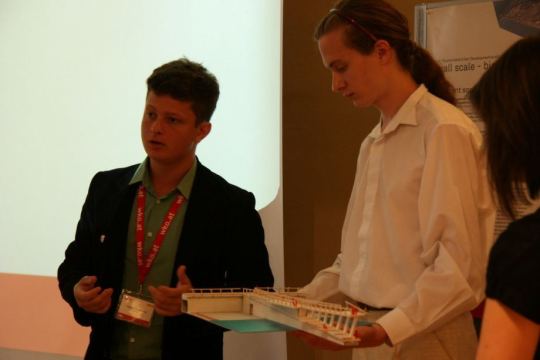
Presenting our team's project - and winning first place - at SUC 12 [Summer University Carinthia] - Villach, Austria
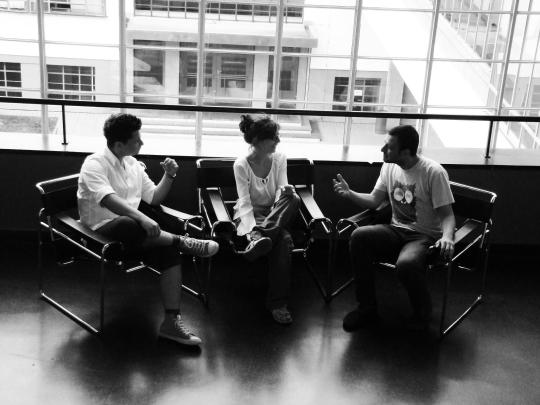
Architect's chat at Bauhaus Summer University, Dessau, Germany
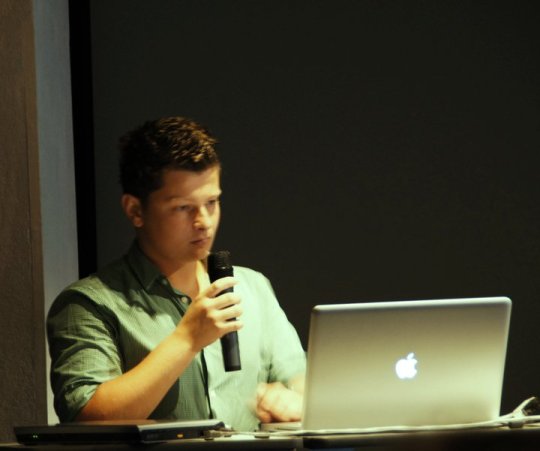
Presenting a school project in front of the Dean of Harvard Universty - Graduate School of Architecture and Design
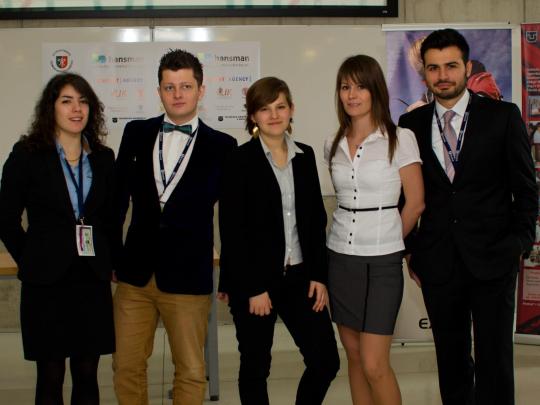
Specialization course in Kosice, Slovakia - international team
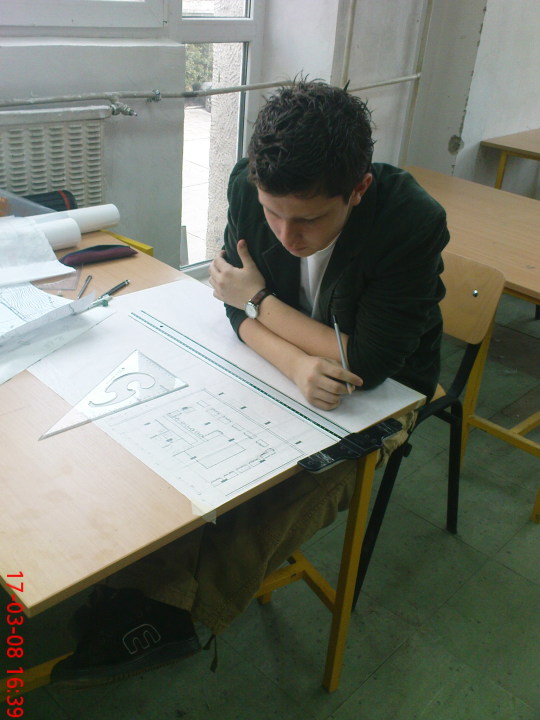
Year 1 - working in the studio - hand drafting

Year 1 or 2: working in the university student dorm
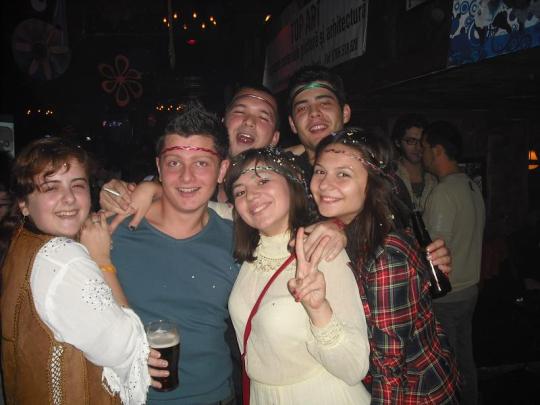
With colleagues from uni
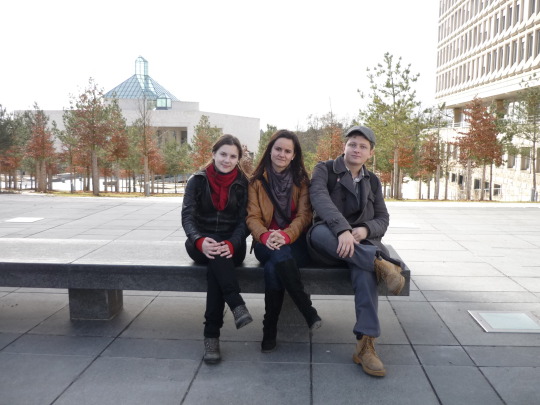
Exploring Luxembourg's contemporary architecture - European Quarter

Study trip in Venice for the Architecture Biennale
#Architecture#architecture students#romania#masters in architecture#iași#whatafterbarch#architect#Architects
2 notes
·
View notes